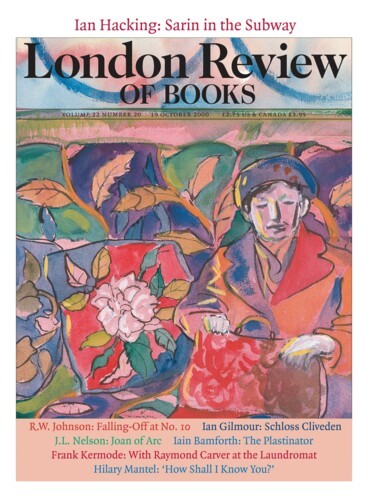Fashions, like seasonal fruit, are best consumed fresh. The photographs which speed garments to the markets say less, these days, about the product than about imagined fates. They tell stories in which clothes will be tear-stained (or champagne or beer or blood-stained). They show how they will be stretched dancing or crushed on the grass – and how people who wear them might see out the day or see in the dawn. Or the clothes become the basis for abstractions, for images which extract the soul of the design and discard the character of the human prop. Although there are, still, ordinary fashion photographs, in which the frock or pair of jeans is mildly glamorised, pictures taken for the smartest fashion companies and the coolest magazines more often look, at first glance, like art or reportage. You have only a microsecond in which to make the reader’s eye flicker, to stop her turning the page; the new kind of fashion picture’s first job is to get your attention.
These pictures are the result of teamwork. A stylist finds locations and props. Make-up artist, art director and fashion editor all muck in. This one learns from Imperfect Beauty: The Making of Contemporary Fashion Photographs, which runs at the V&A until next March. The walls and catalogue (V&A, £24.95) carry quotations from interviews with the people involved. Ambitions run high: ‘We were trying to do something culturally significant … We didn’t want the magazine to be condescending. We wanted it to feel unmediated.’ (Rankin of Dazed and Confused). ‘The Face or Italian Vogue … allow me to put together almost like a film a vision of the way I want to see the world.’
Has art invaded fashion, or fashion swallowed art? The photographer Nigel Shafran ‘wanted to put real people and issues into magazines, but that was pretty stupid because the main thing was about selling an item of clothing which I hadn’t thought about at all’. The stylist Melanie Ward says: ‘Even if I am shooting a designer outfit, I want to add a little twist, a touch of irony, something a bit rebellious.’ The cream of fashion image makers want to make the image into something else, to be personal.
Corinne Day’s pictures in Imperfect Beauty are, on the face of it, the most personal of all. When she took fashion pictures she wanted to ‘instil some reality into a world of fantasy’. Yet her girls, casually showing that they are not wearing knickers, lit as brazenly as Marbella snaps rolling out of the machine at Qwikpix, are, in this context, artful. As artful as, say, Mario Sorrenti’s blurred pictures of a girl on a stool which read as photographic transcriptions of Bacon paintings. Photographs have lost the special status they had as evidence, but we still sort out, as far as we can, the real from the make-believe. Sometimes (as in the case of Sally Mann’s pictures of her children) people get agitated because the signals are ambiguous. Fashion, the most artificial of photographic genres, will use any style – no matter how un-artful – to catch your eye. But the story the interviews in Imperfect Beauty tell often suggests a hankering for picture-making projects in which ‘selling an item of clothing’ is not the highest priority.
Send Letters To:
The Editor
London Review of Books,
28 Little Russell Street
London, WC1A 2HN
letters@lrb.co.uk
Please include name, address, and a telephone number.


